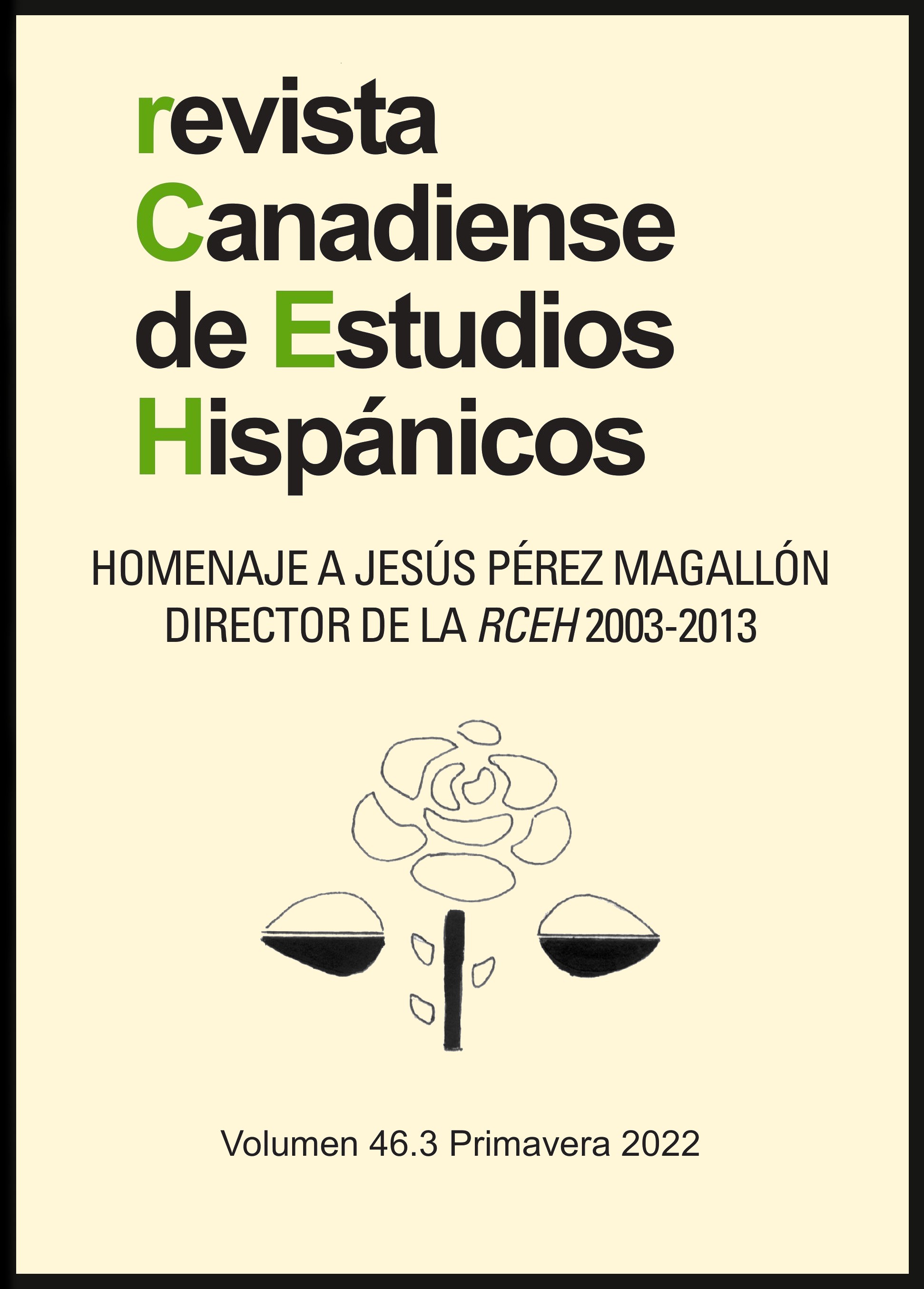Goya on Sexual Violence: Testimony and Critique
DOI:
https://doi.org/10.18192/rceh.v46i3.7079Keywords:
Goya, Image, Rape, War, IconographyAbstract
This essay examines three prints from Goya’s Disasters of War to elucidate the complex moral analyses that the artist develops over the course of his famous print series. While the Disasters of War have often been understood as forms of historical testimony, the essay argues that the series is better understood within the eighteenth-century coordinates of critique and satire. It focuses on prints dedicated to sexual violence to underscore the dense layering of meanings that Goya achieves through: a) the sequential presentation of his image; b) the interplay between captions and images; and c) the combination of realist pictorial codes and abstraction.
References
ASKIN, KELLY DAWN. War Crimes Against Women: Prosecution in International War Crimes Tribunals. The Hague: M. Nijhof, 1997.
BASELS SANDRA, JUAN BORDES, AND JOSÉ MATILLA. Goya, cronista de todas las guerras: los desastres y la fotografía de guerra. Las Palmas: Centro Atlántico de Arte Moderno, 2009.
BOZAL, VALERIANO. Imagen de Goya. Barcelona: Lumen, 1983.
BRANCHE, RAPHAËLLE, AND FABRICE VIRGILI. Rape in Wartime. New York: Palgrave Macmillan, 2013.
BRUNET, PIERE GUSTAVE. Étude sur Francisco Goya : sa vie et ses travaux. Paris: Aubry, 1865.
CIOFALO, JOHN. The Self-Portraits of Francisco Goya. Cambridge: Cambridge UP, 2000.
DÉROZIER, CLAUDETTE. La Guerre d’Independence espagnol a travers l’estampe (1808-1814). Vol 2. Lille: Université Lille III, 1976.
DWYER, PHILIP. “‘It Still Makes Me Shudder’: Memories of Massacres and Atrocities during the Revolutionary and Napoleonic Wars.” War in History 16.4 (2009): 381-405.
ESPIGADO, GLORIA. “Armas de mujer. El patriotismo de las españolas en la Guerra de la Independencia.” El comienzo de la Guerra de la Independencia. Congreso Internacional del Bicentenario. Eds. Emilio de Diego and José Luis Martín Sanz. Madrid: Actas Editorial, 2008. 67-88.
HOFFMAN, WERNER. Goya. Das Zeitalter der Revolutionen. 1789-1830. Hamburg/Munich: Hamburger Kunsthalle/Prestel Verlag, 1980.
GLENDINNING, NIGEL. “El asno cargado de reliquias en los Desastres de la guerra de Goya.” Archivo Español de Arte, 25.139 (1962): 221-30.
HUGHES ROBERT. Goya. New York: Knopf, 2003.
KOSELLEK, REINHART. The Practice of Conceptual History: Timing History, Spacing Concepts. Stanford: Stanford UP, 2002.
LAFUENTE FERRARI, ENRIQUE. Los desastres de la guerra de Goya y sus dibujos preparatorios. Barcelona: Instituto Amatller de Arte Hispánico, 1952.
MATILLA, JOSÉ MANUEL. Goya: luces y sombras. Madrid: Museo del Prado, 2012.
ROMEO MATEO, MARÍA CRUZ. “Españolas en la guerra de 1808: Heroínas recordadas.” Heterodoxas, guerrilleras y ciudadanas. Eds. Mercedes Yusta and Ignacio Peiro. Zaragoza: Institución Fernando el Católico (CSIC), 2015. 63-83.
SAYRE, ELEANOR. The Changing Image: Prints by Francisco de Goya. Boston: Museum of Fine Arts, 1974.
SEIFERT, RUTH. “War and Rape: A Preliminary Analysis.” Mass Rape: The War Against Women in Bosnia-Herzegovina. Ed. Alexandra Stiglmayer. Lincoln: U of Nebraska Press, 1994. 54-72.
VEGA, JESUSA. “Las estampas de los ‘Desastres de la guerra.’” Desastres de la guerra. Estudios. Barcelona: Planeta, 2008. 72-328.
WOLF, REVA. “Onlooker, Witness, and Judge in Goya’s Disasters of War.” Fatal Consequences: Callot, Goya, and the Horrors of War. Ed. Hilliard T. Goldfarb and Reva Wolf. New Hampshire: Hood Museum of Art, 1990. 37-52.
Downloads
Published
Issue
Section
License
Copyright (c) 2024 Michael Iarocci

This work is licensed under a Creative Commons Attribution 4.0 International License.
Aquellos/as autores/as que deseen publicar en la RCEH o tengan publicaciones en esta revista aceptan los siguientes términos:
- La RCEH solo publica artículos inéditos.
- Los artículos enviados a la RCEH no deben estar bajo consideración en ninguna otra revista o editorial.
- Los/as autores/as podrán incluir imágenes cuando las consideren esenciales para su estudio. Es responsabilidad suya el obtener por escrito la autorización para su reproducción y presentarla a la RCEH.
- Los/as autores/as conservarán sus derechos de autor y garantizarán a la RCEH el derecho de primera publicación de su obra, el cuál estará simultáneamente sujeto a la Licencia de reconocimiento de Creative Commons que permite a terceros compartir la obra siempre que se indique su autor y su primera publicación en la RCEH.
- 12 meses después de la publicación de su obra en la RCEH, los/as autores/as podrán adoptar otros acuerdos de licencia no exclusiva de distribución de la versión de la obra publicada (p. ej.: depositarla en un archivo telemático institucional o publicarla en un volumen monográfico) siempre que se indique la publicación inicial en esta revista.


